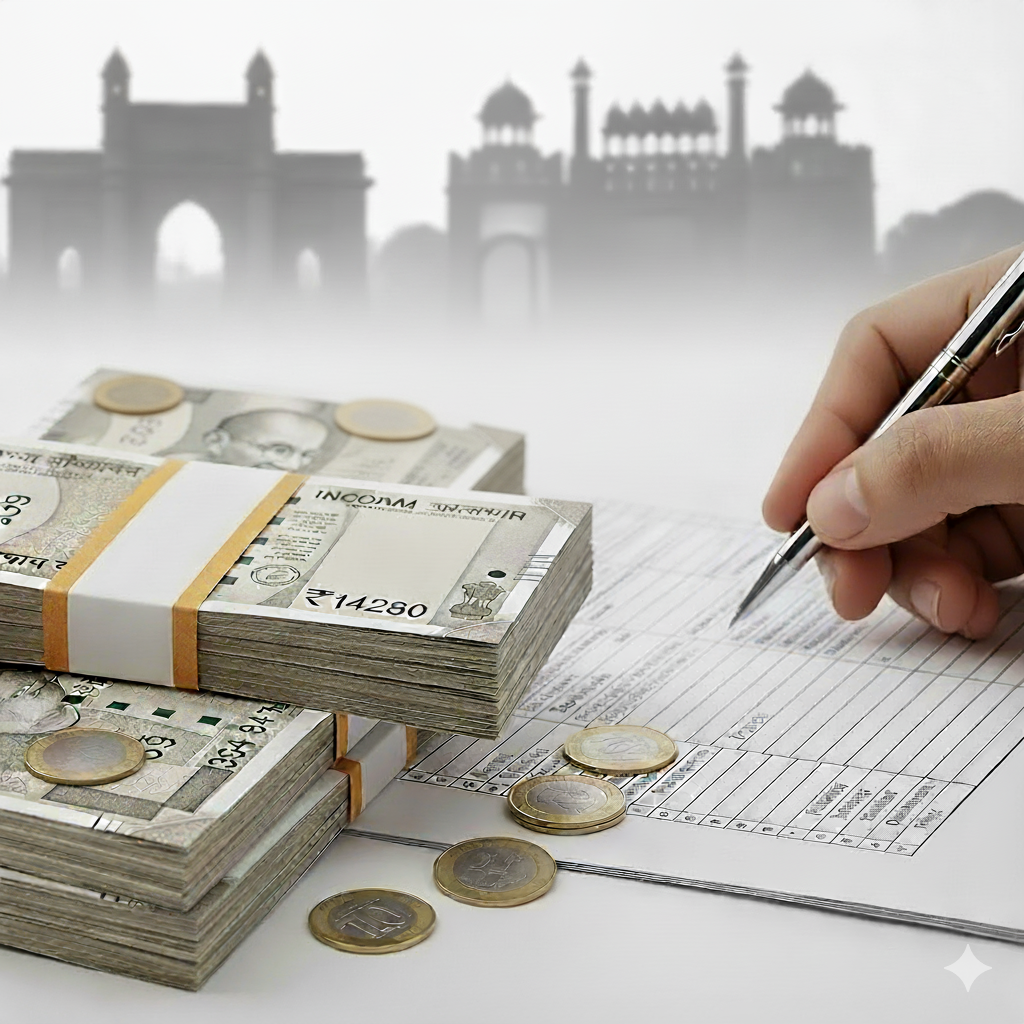Finance Minister Nirmala Sitharaman unveiled the Union Budget 2025-26, describing it as a blueprint for economic growth, social welfare, and technological progress. The budget emphasizes key areas such as agriculture, infrastructure, tax relief, and digital transformation while prioritizing defense modernization, cybersecurity, and space exploration. Notable highlights in Union Budget 2025 includes increased credit support for farmers, tax reductions for the middle class, unprecedented investments in healthcare and education, and a strong push for innovation and manufacturing.
This blog explores the key highlights and takeaways from the Union Budget 2025 for the people of India.
Key Highlights of Union Budget 2025
1. Technology and Innovation
- National Geospatial Mission – Focuses on modernizing land records, improving urban planning, and enhancing infrastructure design.
- Deep Tech Fund of Funds (₹10,000 crore) – Aim to support cutting-edge startups in AI, biotechnology, and space technology.
- PM Research Fellowship – Offers 10,000 fellowships for students at IITs and IISc with increased financial assistance.
- Gene Bank for Crop Germplasm – Establishing a second gene bank to preserve 10 lakh plant varieties for food security.
- Nuclear Energy Expansion – Allocates ₹20,000 crore for Small Modular Reactors (SMRs) to help achieve the 100 GW nuclear energy target by 2047.
- Gyan Bharatam Mission – Focuses on surveying, digitizing, and preserving over 1 crore ancient manuscripts.
2. Infrastructure and Urban Development
- Urban Challenge Fund (₹1 lakh crore) – Aims to develop cities as growth hubs, support redevelopment, and improve water and sanitation projects.
- 50-Year Interest-Free Loan to States – Allocates ₹1.5 lakh crore for capital infrastructure development.
- Jal Jeevan Mission Extension – Extended until 2028 to ensure 100% rural tap water coverage.
- Public-Private Partnership in Infrastructure – Each ministry to outline a three-year pipeline for PPP projects.
- Asset Monetisation Plan (₹10 lakh crore, 2025-30) – Government to generate funds for new projects by selling assets.
- UDAN Regional Connectivity Scheme – Expanding to 120 new destinations, targeting four crore passengers over the next decade.
- Greenfield Airport in Bihar – Planned to complement the existing airports in Patna and Bihta.
3. Agriculture and Rural Development
- Prime Minister Dhan-Dhaanya Krishi Yojana – Implemented in 100 districts to enhance agricultural productivity, irrigation, storage, and credit access.
- Mission for Aatmanirbharta in Pulses – A six-year initiative focused on achieving self-sufficiency in Tur, Urad, and Masoor dal production.
- Comprehensive Programme for Vegetables & Fruits – Aim to boost production, streamline supply chains, and ensure fair prices for farmers.
- Mission for Cotton Productivity – A five-year strategy leveraging science and technology to increase cotton yields.
- Kisan Credit Card (KCC) Loan Limit Increase – Raised from ₹3 lakh to ₹5 lakh for farmers, fishermen, and dairy farmers.
- New Urea Plant in Assam – Set to produce 12.7 lakh metric tons annually for domestic consumption.
4. Healthcare
- Medical College Expansion – There will be new 10,000 UG/PG seats in 2025-26, for the medical students.
- Day Care Cancer Centres in District Hospitals – 200 – day care cancer centers in 2025-26, expecting to cover all districts in three years.
- Social Security for Gig Workers – Includes identity cards, registration on the e-Shram portal, and healthcare under PM Jan Arogya Yojana.
- Medical Tourism & “Heal in India” – Private-sector partnership to promote India as a global healthcare hub.
- Broadband for Primary Health Centres (PHCs) – Under the scheme BharatNet, all rural PHCs will get an internet connection.
5. Personal Taxes and Financial Reforms
- No Tax on Income up to ₹12 Lakh (₹12.75 lakh for salaried individuals) – Here is the Revised Tax Slab.
| Income Range | Tax Rate |
| ₹0-4 lakh | No tax |
| ₹4-8 lakh | 5% |
| ₹8-12 lakh | 10% |
| ₹12-16 lakh | 15% |
| ₹16-20 lakh | 20% |
| ₹20-24 lakh | 25% |
| Above ₹24 lakh | 30% |
- Higher Exemption for Senior Citizens – Interest income exemption increased from ₹50,000 to ₹1 lakh.
- Increased TDS Exemption on Rent – Limit raised from ₹2.4 lakh to ₹6 lakh.
- Extended Time for Filing Updated Returns – Taxpayers now have four years (instead of two) to revise returns.
6. Education and Skill Enhancement
- 50,000 Atal Tinkering Labs – To be established in government schools over the next five years to encourage STEM education.
- Broadband Connectivity for Schools – All government secondary schools will be connected under the BharatNet initiative.
- Bharatiya Bhasha Pustak Scheme – Provision of digital books in Indian languages for school and higher education.
- 5 National Centres of Excellence for Skilling – Collaboration with industries to provide advanced manufacturing training.
- Expansion of IITs – 6,500 additional students will be accommodated, with hostel facilities expanding at IIT Patna.
- Centre of Excellence in AI for Education – ₹500 crore allocated for AI-driven research in education.
7. Trade and Export
- Export Promotion Mission – The Ministries of Commerce, MSME, and Finance will collaborate to drive focused export growth.
- BharatTradeNet – A digital public infrastructure to streamline trade documentation and financing.
- Warehousing for Air Cargo – Emphasis on storing high-value perishable goods, such as horticulture and seafood exports.
- Integration with Global Supply Chains – Support for Industry 4.0 and electronics manufacturing to enhance global integration.
- National Framework for Global Capability Centres (GCCs) – Encouraging the development of IT and R&D hubs in Tier-2 cities.
8. Energy and Environment
- Nuclear Energy Expansion – A Nuclear Energy Mission will be established with ₹20,000 crore allocated for the research and development of Small Modular Reactors (SMRs). At least five domestically developed SMRs will be operational by 2033.
- Green Manufacturing – Incentives will be provided for solar PV cells, EV batteries, electrolyzers, and wind turbines.
- Power Sector Reforms – States will receive an additional 0.5% of GSDP in borrowing capacity to support upgrades in electricity distribution.
9. Tourism and Cultural Development
- Top 50 Tourist Sites Development – Special emphasis on enhancing Buddhist circuits and other spiritual and historical sites.
- PM SVANidhi Expansion – Credit support extended to 68 lakh street vendors, with a ₹30,000 UPI-linked credit limit.
- Medical Tourism & ‘Heal in India’ Initiative – Simplified visa procedures and increased global partnerships to promote medical tourism.
10. MSME (Micro Small and Medium Enterprise) and Manufacturing
- National Manufacturing Mission – Strengthening MSMEs and promoting ‘Make in India’ through policy support and incentives.
- Enhanced Credit for MSMEs & Startups:
- Micro & Small Enterprises – Credit limit increased from ₹5 crore to ₹10 crore.
- Startups – Guarantee cover raised from ₹10 crore to ₹20 crore.
- Exporter MSMEs – Term loan guarantee up to ₹20 crore.
- Credit Cards for Micro Enterprises – ₹5 lakh credit limit, with 10 lakh cards issued in the first year.
- Fund of Funds for Startups (₹10,000 crore) – Expanded support for new businesses.
- New Scheme for First-Time Entrepreneurs – Loans up to ₹2 crore for 5 lakh SC/ST and women entrepreneurs.
11. Shipping and Maritime
- Maritime Development Fund (₹25,000 crore) – Providing support for shipbuilding and port modernization.
- Revamp of Shipbuilding Financial Assistance Policy – Introduces credit notes for shipbreaking activities.
12. Major Allocation and Investments
- 50-Year Interest-Free Loans to States: ₹1.5 lakh crore
- Asset Monetization Plan (2025-30): ₹10 lakh crore
- Jal Jeevan Mission Extension: Expands to cover 15 crore rural households, extended until 2028
- Urban Challenge Fund: ₹1 lakh crore (with ₹10,000 crore allocated for 2025-26)
- Nuclear Energy Mission: ₹20,000 crore for Small Modular Reactors (SMRs)
- Research & Innovation Initiative: ₹20,000 crore
- Deep Tech Fund of Funds: ₹10,000 crore
- SWAMIH Fund 2 for Stressed Housing Projects: ₹15,000 crore (to complete 1 lakh houses)
- Maritime Development Fund: ₹25,000 crore
13. Defense
- Ongoing Modernisation of Armed Forces –Greater emphasis on self-reliance through Atmanirbhar Bharat. Financial support for next-gen weapons, AI-based defense tech, and cutting-edge surveillance systems.
- Boost to Domestic Defence Manufacturing – Increased funding for defense startups and MSMEs under the Make in India initiative. Introduction of new incentives for the private sector to manufacture defense equipment.
- Infrastructure for Strategic Readiness – Development of border infrastructure in critical regions. Expansion of logistics and airbases to enhance military mobility.
- Enhanced Cybersecurity for Defence – Strengthening of cyber defense units within the armed forces. New collaborations with private tech firms to create AI-powered security solutions.
14. Space
- Increased Budget for ISRO & Private Space Sector – Additional funding for Gaganyaan (India’s first human spaceflight mission). Expansion of the Small Satellite Launch Vehicle (SSLV) program for commercial purposes.
Strengthening of NavIC, India’s regional satellite navigation system. - New Space Industrial Corridors – Support for private space startups through tax incentives and financial backing. Development of dedicated industrial corridors for manufacturing space technology.
- Public-Private Collaboration in Space Tech – Strengthening IN-SPACe (Indian National Space Promotion and Authorization Center) to encourage private-sector involvement. Promoting satellite-based broadband services to enhance connectivity in rural areas.
- Nuclear-Powered Space Missions – R&D funding for nuclear propulsion systems for deep-space exploration.
Final Thoughts
The Union Budget 2025-26 outlines a detailed strategy to drive economic growth, support vital sectors, and improve the welfare of citizens. Through major tax reforms and investments in essential areas, the government seeks to create a resilient and thriving economy.








